
Jerry Lee Lewis was an American pianist, singer and songwriter. Nicknamed "The Killer", he was described as "rock 'n' roll's first great wild man". A pioneer of rock and roll and rockabilly music, Lewis made his first recordings in 1952 at Cosimo Matassa's J&M Studio in New Orleans, Louisiana, and early recordings in 1956 at Sun Records in Memphis, Tennessee. "Crazy Arms" sold 300,000 copies in the Southern United States, but it was his 1957 hit "Whole Lotta Shakin' Goin' On" that shot Lewis to worldwide fame. He followed this with the major hits "Great Balls of Fire", "Breathless", and "High School Confidential".

Richard Wayne Penniman, known professionally as Little Richard, was an American singer, pianist, and songwriter. He was an influential figure in popular music and culture for seven decades. Described as the "Architect of Rock and Roll", Richard's most celebrated work dates from the mid-1950s, when his charismatic showmanship and dynamic music, characterized by frenetic piano playing, pounding backbeat and powerful raspy vocals, laid the foundation for rock and roll. Richard's innovative emotive vocalizations and uptempo rhythmic music played a key role in the formation of other popular music genres, including soul and funk. He influenced singers and musicians across musical genres from rock to hip hop; his music helped shape rhythm and blues for generations.

Dinah Washington was an American singer and pianist, one of the most popular black female recording artists of the 1950s. Primarily a jazz vocalist, she performed and recorded in a wide variety of styles including blues, R&B, and traditional pop music, and gave herself the title of "Queen of the Blues". She was a 1986 inductee of the Alabama Jazz Hall of Fame, and was inducted into the Rock and Roll Hall of Fame in 1993.

Sister Rosetta Tharpe was an American singer, songwriter and guitarist. She gained popularity in the 1930s and 1940s with her gospel recordings, characterized by a unique mixture of spiritual lyrics and electric guitar. She was the first great recording star of gospel music, and was among the first gospel musicians to appeal to rhythm and blues and rock and roll audiences, later being referred to as "the original soul sister" and "the Godmother of rock and roll". She influenced early rock-and-roll musicians including Little Richard, Johnny Cash, Carl Perkins, Chuck Berry, Elvis Presley, Jerry Lee Lewis, and also later guitarists, such as Eric Clapton.

"Good Golly, Miss Molly" is a rock 'n' roll song first recorded in 1956 by American musician Little Richard and released in January 1958 as Specialty single 624, and later on Little Richard in July 1958. The song, a jump blues, was written by John Marascalco and producer Robert "Bumps" Blackwell. Although it was first recorded by Little Richard, Blackwell produced another version by the Valiants, who imitated the fast first version recorded by Little Richard, not released at that time. Although the Valiants' version was released first, Little Richard had the hit, reaching No. 4. Like all his early hits, it quickly became a rock 'n' roll standard and has subsequently been recorded by hundreds of artists. The song is ranked No. 92 on the Rolling Stone magazine's list of the 500 Greatest Songs of All Time.

"Tutti Frutti" is a song written by Little Richard and Dorothy LaBostrie, recorded in 1955, which was his first major hit. With its energetic refrain, often transcribed as "A-wop-bop-a-loo-mop-a-lop-bam-boom!", and its hard-driving sound and wild lyrics, it became not only a model for many future Little Richard songs, but also for rock and roll itself. The song introduced several of rock music's most characteristic musical features, including its loud volume, powerful vocal style, and distinctive beat and rhythm.

Pain in My Heart is the debut album of soul singer-songwriter Otis Redding. Redding recorded for Volt Records, a subsidiary of Stax Records, based in Memphis, Tennessee. Volt LPs were initially issued on the Atco label, which released this album.

Eskew Reeder, Jr., usually known by the stage name Esquerita, and occasionally as S.Q. Reeder or The Magnificent Malochi, was an American R&B singer, songwriter and pianist, known for his frenetic performances. He has been credited with influencing rock and roll pioneer Little Richard.

Robert Alexander "Bumps" Blackwell was an American bandleader, songwriter, arranger, and record producer, best known for his work overseeing the early hits of Little Richard, as well as grooming Ray Charles, Quincy Jones, Ernestine Anderson, Lloyd Price, Sam Cooke, Herb Alpert, Larry Williams, and Sly and the Family Stone at the start of their music careers.
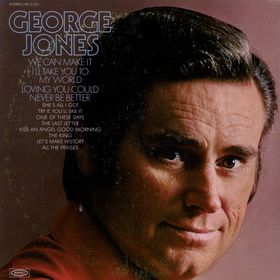
George Jones, also titled George Jones (We Can Make It) was the 1972 country music studio album released by George Jones in April 1972. The release was Jones' 46th studio album release since a debut from 16 years previous. Also as a highlight in his career, it was the first release made on Jones' new label, Epic Records.
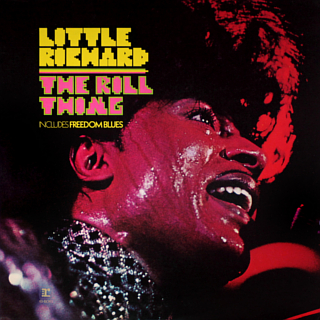
The Rill Thing is Little Richard's first album for Reprise Records, released in August 1970. It was considered a comeback album for Richard, following a three-year hiatus on new albums and an acclaimed performance at Atlantic City Pop Festival. The album utilizes a soul-influenced sound and contains Little Richard's biggest post-Specialty single in "Freedom Blues", which broke the Billboard top 50. The follow-up single, "Greenwood, Mississippi" made the top 100 and number 56 on Cashbox Black Singles. Despite the success of the singles, the album failed to chart.
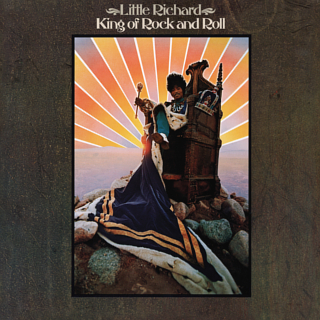
The King of Rock and Roll is an album by Little Richard, released in 1971. It was his second album for Reprise Records. It was rereleased as part of the King of Rock and Roll: The Complete Reprise Recordings set.

The Second Coming was Little Richard's third album for Reprise Records, released in 1972. The album saw him reunited with Robert "Bumps" Blackwell from his Specialty days, with them co-writing the majority of the album together. The concept was to unite the best rock studio musicians of the '50s with the best rock studio musicians of the '70s. The album failed to chart.

Little Richard Is Back is Little Richard's first album of rock and roll songs for Vee-Jay Records. The label went out of business and its records were not accurate, leaving many to speculate about the recording details. Despite claims to the contrary, Jimi Hendrix does not play on any of the album's songs.

Little Richard Live! 20 Super Hits is a recording of a live-in-studio performance by Little Richard. Recorded at the Jack Clement Studio in Nashville before an audience, the album featured remakes of twenty of his Specialty Records tracks. Counting the live takes on this album, this was the second time that Richard had rerecorded his 1950s hits in studio. These August 1976 sessions and an early 1990s session with Japanese guitarist Masayoshi Takanakka are the last times that Penniman would re-record his 1950s hits for an album before his death in May 2020. Alternate takes from these sessions are found on a full stereo "Audiophile" album from 1980.
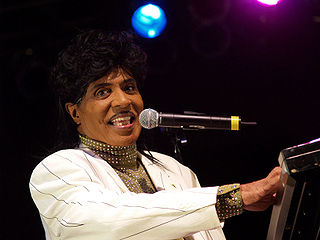
This page is a discography for American musician Little Richard (1932–2020). Described as "the architect of rock and roll", Little Richard was a pioneering singer-songwriter whose career also encompassed rhythm and blues, soul, and gospel. He began his recording career in 1951, signing to RCA Victor, releasing his first singles, and his first album in 1957, although he released his last album in 1992, he continued to tour into the 21st century. He attained international success after signing with Specialty Records in 1955.

The Fabulous Little Richard was the third album from Little Richard, and the end of his rock and roll period. Released seventeen months after he had left the Specialty Records label, Richard had returned to religion and turned his back on the music that made him famous. Though he would briefly rescind that decision in 1962, and sporadically throughout his career, this album marked the end of his peak period. In order to make the record more accessible to listeners, over half of the tracks featured an overdubbed female backing group. The record was put together including out-takes and other leftover studio tracks, which saw Richard in a somewhat more mellow styling.
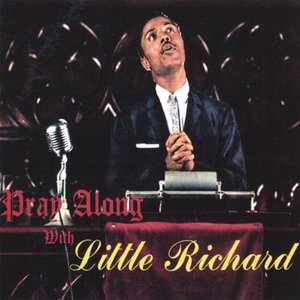
Pray Along with Little Richard is the fourth studio album, and first gospel album, by Little Richard. It was recorded during the period when he had renounced rock and roll and left the Specialty Records label. R and B star Richard Barrett drove Little Richard from Huntsville, Alabama to Manhattan, New York probably June, 1959, to sign a contract with George Goldner, on June 22.

Pray Along with Little Richard Volume 2 was the second gospel album by Little Richard, and his fifth album overall, discounting compilations.

Lifetime Friend is an album by Little Richard, released in 1986 and his first since the release of God's Beautiful City in 1979. Following that album's release and some 1981 recordings, backing tracks of which were used for TV appearances, Richard had made no recordings while he continued his career in the ministry. Following the release of his autobiography, The Quasar of Rock and Roll, in 1984, Richard reemerged in the public eye and had begun to be recognized for his contributions to popular music as one of the founders of rock and roll music.




















